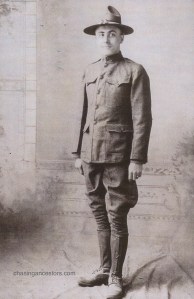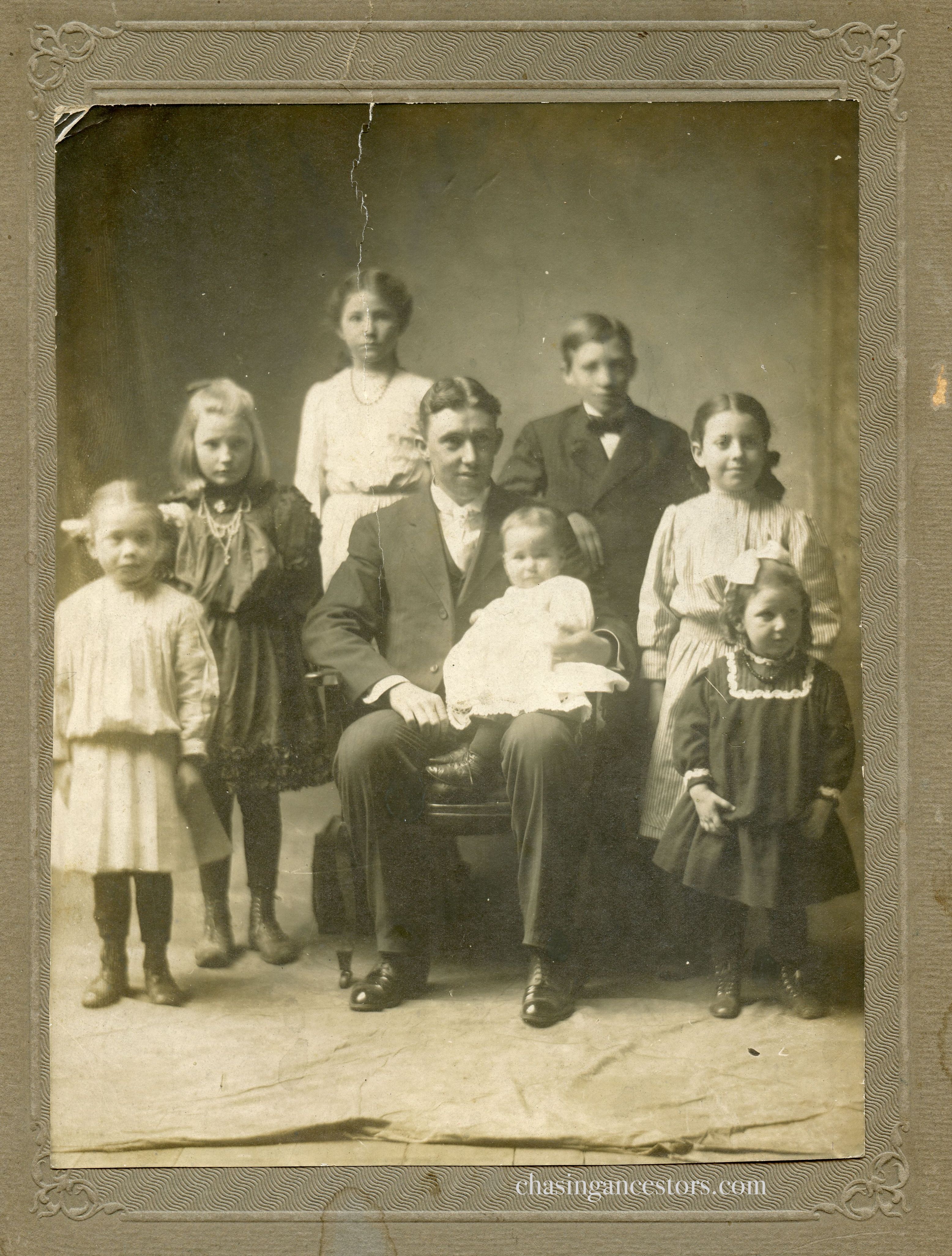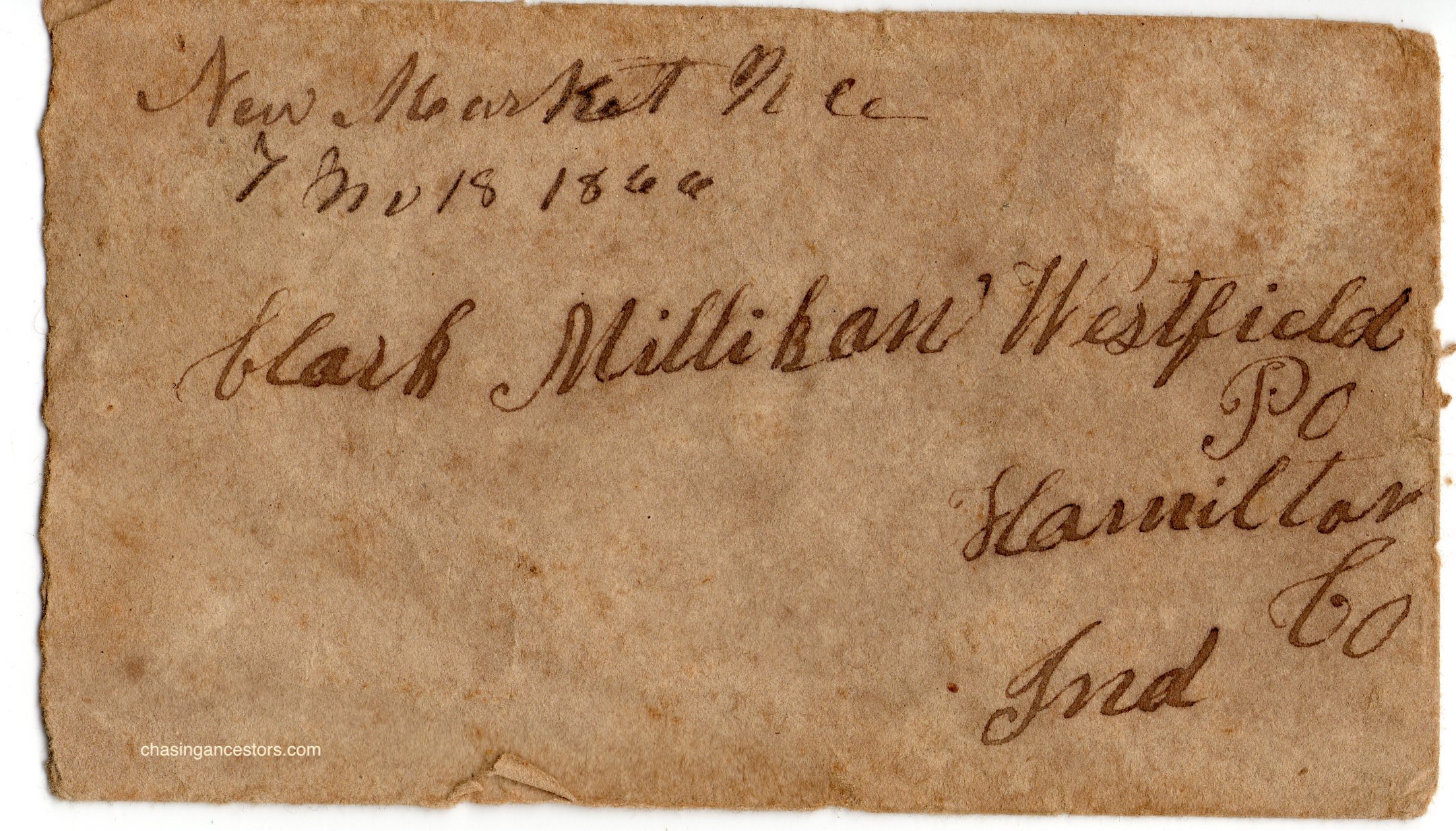
Margaret, Loran Jr, Loran McKinley Sr.
On May 26, 1938, my father, Loran R McKinley, Jr., “Mac,” was born in Sheridan, IN to Loran R McKinley (1916-2003) and Margaret Millikan McKinley (1917-2007). He spent his childhood on farms in Indiana, played basketball in high school as any Hoosier boy would do, and went off to Taylor University in 1956. He was quite the prankster in college. He told stories of stuffing toilet paper in the pipes of the pipe organ in the chapel and rigging a car up on blocks so it was just barely off the ground to clear the wheels so the person had no idea that it wouldn’t go anywhere until they tried to drive the car. He told me that he really wasn’t ready for college, and he eventually was suspended from Taylor University for the 1959-1960 school year after an incident involving “misuse of a test” or, in other words, for stealing a test. While the letter from the dean stated he could be reinstated after the suspension if he showed “evidence of rehabilitation,” Dad decided not to return.
Figuring that his draft number would be called soon, he joined the Army. If he volunteered, he would have some choice as to what program he could get into and as he said, “I chose the program with the longest training.” On May 8, 1959 he signed the papers to enlist and get training in Medical Laboratory Procedures. He was first assigned to Ft. Leonard Wood, MO for basic training then reassigned to Ft. Riley, KS. After Basic, he went to Ft. Sam Houston, TX for his initial Medical Laboratory training. In January, 1960, he was assigned to Madigan General Hospital, Tacoma, WA for four months, then on to Ft. Dix, NJ for transport via the USNS General William O. Darby to his next assignment at the 97th General Hospital in Frankfurt, Germany.
 While in Frankfurt, he volunteered for the job of medical photographer. He said that during that time, every American death in Germany had to have an autopsy & the pathologist required photographs. While he didn’t have much experience in photography, he read up on it and learned the skills he needed to do the job. Photography was a life-long interest of his after that.
While in Frankfurt, he volunteered for the job of medical photographer. He said that during that time, every American death in Germany had to have an autopsy & the pathologist required photographs. While he didn’t have much experience in photography, he read up on it and learned the skills he needed to do the job. Photography was a life-long interest of his after that.

He reenlisted in 1962 and was transferred to Landstuhl Army Medical Center in Landstuhl, Germany. He said that he transferred as the medical photographer, but also filled the Med Tech role that was open at Landstuhl. On October 12, 1962 he received the Good Conduct Medal. He stayed at Landstuhl through 1963, by which time he had married and started a family.
In 1964 he traveled with his family back to the US to Muncie, IN & was assigned to Ball State Teachers College for additional training in Medical Technology. While in Muncie, his family grew by one more child.
In March of 1965, the United States entered the Vietnam conflict.
In June of 1965, the family moved again to Ft. Sam Houston, TX where he was stationed to Brooke Army Medical Center. On April 4, 1966 he received his second Good Conduct Medal.
In January of 1967, he applied for an appointment to become a Commissioned Officer in the Army Reserve. At the same time he applied for Active Duty. This process was complete in August of 1967, when he was discharged from Enlisted status and commissioned as a Second Lieutenant in the Army Reserves with Active Duty status. On September 4, 1967, he took the Oath of Office of a Reserve Commissioned Officer.
He also received Certificate of Achievement on November 30, 1967 which stated that “Lieutenant Loran R. McKinley, Jr. (then Specialist Six) is cited for meritorious performance of duty while assigned to the Chemistry Unit, Pathology Service, Brooke General Hospital, …Lieutenant McKinley had the critical responsibility of monitoring the various types of apparatus used in Chemistry Unit procedures. By his keen intelligence and professional knowledge he was able to determine if the equipment was functioning properly and capable of producing correct physiological data. Particularly noteworthy were Lieutenant McKinley’s constant efforts to maintain and improve the system of automation in the section with the consequent conservation of time and personnel…”
In December 1967 he got orders to Walson Army Hospital in Ft. Dix, NJ. While at Ft. Dix, he received a Certificate of Achievement. The letter recommending this certificate stated that during his short time at Ft. Dix “2LT McKinley distinguished himself while assigned to the Pathology Service, US Walson Army Hospital as the Officer-in-Charge of the Blood Donor Center. The intelligence, efficiency, and conscientiousness he displayed while fulfilling his mission were notable. 2LT McKinley consistently directed his efforts towards collecting and processing over 500 pints of whole blood weekly for shipment to Southeast Asia. Largely through his leadership, sound judgment and attention to detail, the successful completion of this vital Fort Dix mission was possible.”
Then in January, 1968 he was reassigned to the US Army Medical Center Ryukyu Islands (Okinawa). He arrived in Okinawa in June & his family settled on base in August. He was the Clinical Laboratory Officer of the Medical Center.
He was named on page 37 of the paper, “A History of the Army Blood Program” (by Edward A. Lindeke, Col. Ret. MS, US Army, 2020). “When Captain Loran McKinley (later, BBF class of ’71-72) arrived in Okinawa, he began his own blood collections.” I think this meant that the the blood could now be collected consistently and did not have to wait for someone to travel from Japan to hold a blood drive. Therefore, more blood from Okinawa could then be added to the supply needed for the Pacific Command. Dad said that they would collect blood from the soldiers who stopped in Okinawa on their way to Vietnam or from the Marines stationed on the island. He said they could figure out when a soldier was afraid to donate and would make up some reason such as low blood pressure to excuse that man from donating.
A valuable tool in the transportation of blood during the Vietnam conflict was the Collins Blood box—a styrofoam box developed in 1965 & used to ship units of blood. It may seem simple these days, but at that time it was a breakthrough. It was made of styrofoam & was lighter weight and significantly cheaper to produce than the original transport box, and it was disposable. (according to the Department of the Army paper “Vietnam Studies, Medical Support 1965-1970”) Dad salvaged at least one of those boxes and we used it for many years as a cooler.
Also stated in the US Army report, “for the first time in US military history, every unit of whole blood used to support the war was donated free of charge by military personnel, their dependents, and civilians employed at military installations.” Dad has a certificate recognizing his donation of 3 gallons of whole blood while in Okinawa.
His rank was difficult to follow. In May of 1969, there were Special Orders promoting him to Captain. But then in October of 1969 he was promoted to Reserve Commissioned Officer 1st Lieutenant. Then in July of 1970 he applied for a Commission in the Regular Army. December of 1970 he was promoted to Captain in the Reserves.
According to his military papers, he assumed the role of Commanding Officer of the US Army Medical Center Ryukyu Islands for a short term.
I assume this appointment must have been during a transition period waiting for the new Commander to arrive as there is only one set of orders he signed as Commanding Officer & within a few weeks there was a new Commander. His orders were then amended to Clinical Lab Officer. He had Top Secret Clearance. While in Okinawa, he had several “Court Martial Appointing Orders” to serve as a member or counsel. He took TDY (Temporary Duty) assignments to Taiwan & Japan. My uncle told me that Dad ended up across the “wrong border” on one of his trips & may have been in Laos. I never heard that from Dad.
In 1970 he started the application process for the Blood Bank Fellowship program at Ft. Knox, KY. He was granted entry into the program in April of 1971.

Also in April of 1971 he received the Army Commendation Medal. Unfortunately, there is no citation for this medal in his papers. However, he was very proud of how he helped coordinate the blood supply from Okinawa to support the needs for the troops fighting in Vietnam.
He then received travel orders to Ft Knox. He was at Ft. Knox, KY for about a year for the Blood Bank Fellowship (BBF) training program. As the website for this program states, the purpose was to “prepare selected career officers to become managers of large military hospital blood banks, transfusion services & blood donor centers.” He then received certification as a Specialist in Blood Banking.
In July of 1971, during his time at Ft. Knox, he was Appointed to the Regular Army. He attended the Army Medical Department Officer Advanced Course in March of 1972. He was promoted to 1st Lieutenant in Regular Army Medical Service Corp on July 10, 1972.
After that, in November 1972, he moved on to Fort Sam Houston, TX for a brief stay before taking his family overseas again to 2nd General Hospital, Landstuhl, Germany.
While at Landstuhl, he served as the Laboratory Officer. Just as in Okinawa, he also served as a member of Court Martial. He also received additional training on specialized laboratory equipment and participated in race relations training. On August 26, 1973 he was promoted to Regular Army Captain.
In December of 1975, he received a Certificate of Achievement for recognition of his direction of the renovation of the Laboratory. “With the result that 2nd General Hospital now has a laboratory which will be able to provide more efficient service to its physicians and patients…”
In March of 1976, he received orders of assignment to Redstone Arsenal, AL.
In May of 1976 he received the Army Commendation Medal with first Oak Leaf Cluster. He was recognized for modifying equipment and procedures to allow the Laboratory to “increase its productivity by over 50,000 procedures a month without the necessity of additional manpower.” The citation also states that he spent “numerous off duty hours assisting in the painting of the laboratory area at a substantial savings to the US Government.”
In August of 1976, established his final duty station at Redstone Arsenal Medical Laboratory. He was a member in the Society of Armed Forced Medical Laboratory Scientists. On November 1, 1977 he was promoted to Major.
While at Redstone Arsenal, he oversaw the transition of Laboratory services to a new hospital, Fox Army Hospital, which opened in September 1978.
On June 19, 1979, he received the US Army Health Services Command Award Meritorious Service Medal (first Oak Leaf cluster) with the citation stating, “Through his deep personal interest, tremendous depth of knowledge, initiative, and untiring devotion to duty, Major McKinley significantly upgraded the laboratory instrumentation resulting in a remarkable expansion of accuracy and capability of the department. As the only officer assigned to the department, he was solely responsible for the successful accreditation of the laboratory by the College of American Pathologists. Through sound advice, tact, and wealth of experience, he contributed immeasurably to overall mission accomplishment. Major McKinley’s exemplary performance of duty reflects great credit on him, the Army Medical Department, and the United States Army.”
Looking through all of his Officer Evaluation Reports, he always received exemplary scores and remarks. He obviously worked hard and took pride in what he did. He retired from the US Army on June 30, 1979 after 20 years of service. The skills he developed served him well for many years in civilian life as he worked in hospital or private clinic laboratories.
Some things he learned in the Army never left him. I remember attending concerts or events with my folks when there would be a recognition of active duty or retired members of the military. My Dad would stand with the veterans. His ability to stand fully upright at attention waned as he got older but I noticed that regardless of that, he would always hold his hands with his thumbs along the side seams of his pants, as I’m sure he was taught so many years ago in Basic Training.
 While this story of a military career does not include any heroic battle scenes, it is the story of a regular guy who did an honorable job in support of his country during a time of war and a time of peace. Loran R McKinley, Jr died July 27, 2021. He is buried at the National Cemetery in Montevallo, AL.
While this story of a military career does not include any heroic battle scenes, it is the story of a regular guy who did an honorable job in support of his country during a time of war and a time of peace. Loran R McKinley, Jr died July 27, 2021. He is buried at the National Cemetery in Montevallo, AL.
Thank you for your service, Dad.
© MJM 2024


















 First, the Alamance Battleground. What happened on this site? What battle is commemorated here? According to the Friends of the Alamance Battleground website <alamancebattleground.org>, “The Battle of Alamance was fought on Thursday, May 16, 1771. It pitted two groups of North Carolinians against each other. There were approximately 2,000 backcountry farmers called Regulators and around 1,000 militia troops (citizen soldiers) under the command of Royal Governor William Tryon involved in the two-hour battle.”
First, the Alamance Battleground. What happened on this site? What battle is commemorated here? According to the Friends of the Alamance Battleground website <alamancebattleground.org>, “The Battle of Alamance was fought on Thursday, May 16, 1771. It pitted two groups of North Carolinians against each other. There were approximately 2,000 backcountry farmers called Regulators and around 1,000 militia troops (citizen soldiers) under the command of Royal Governor William Tryon involved in the two-hour battle.”























